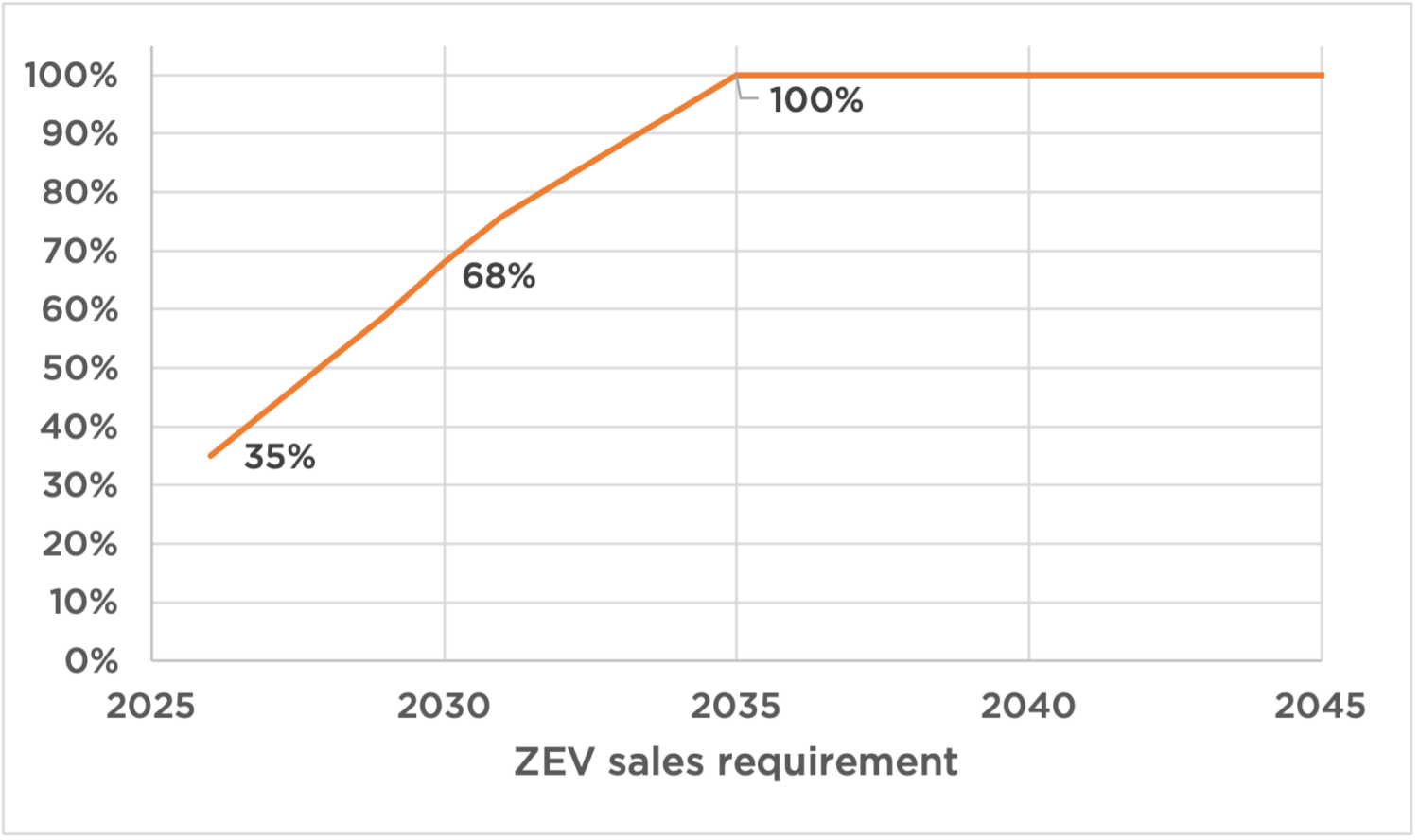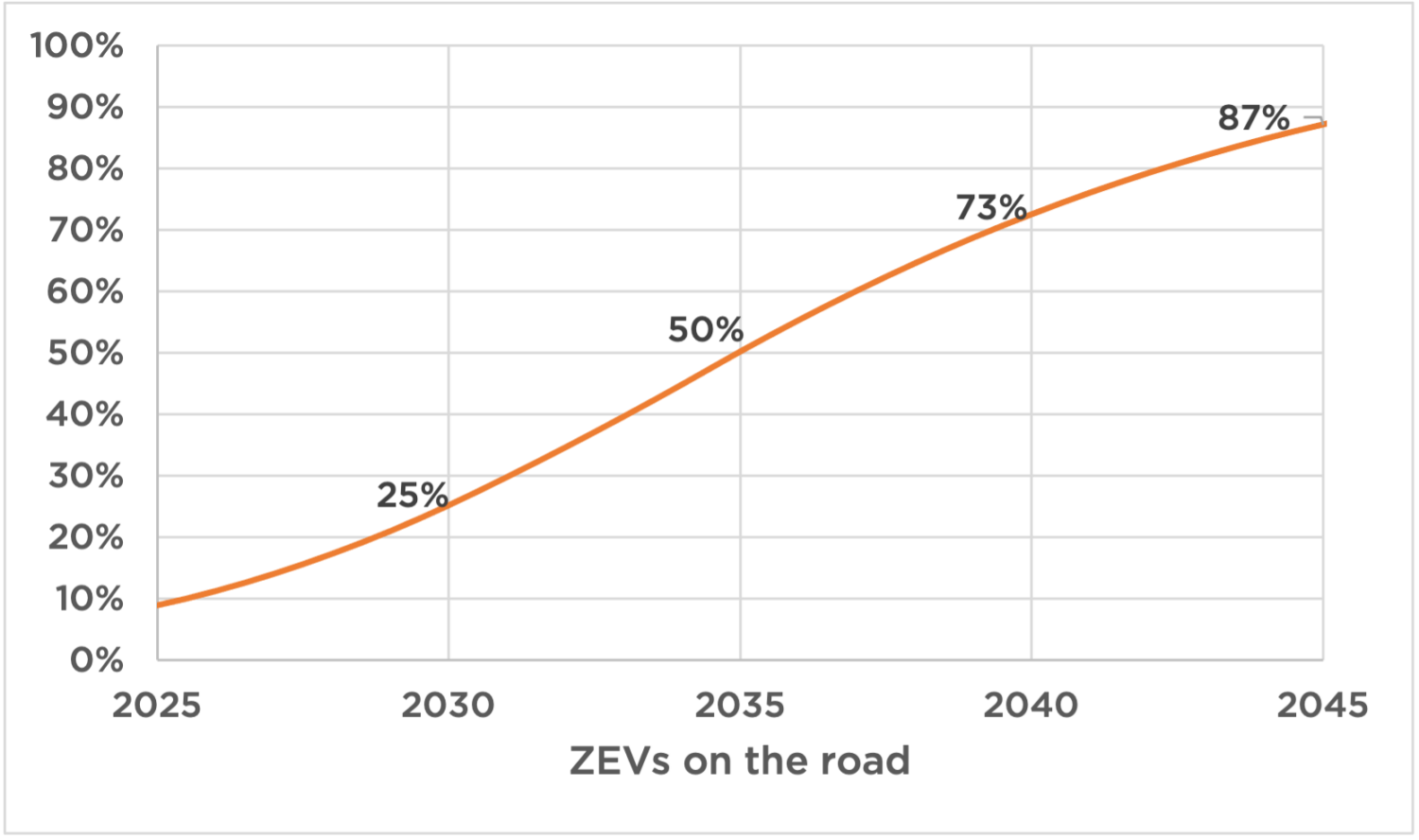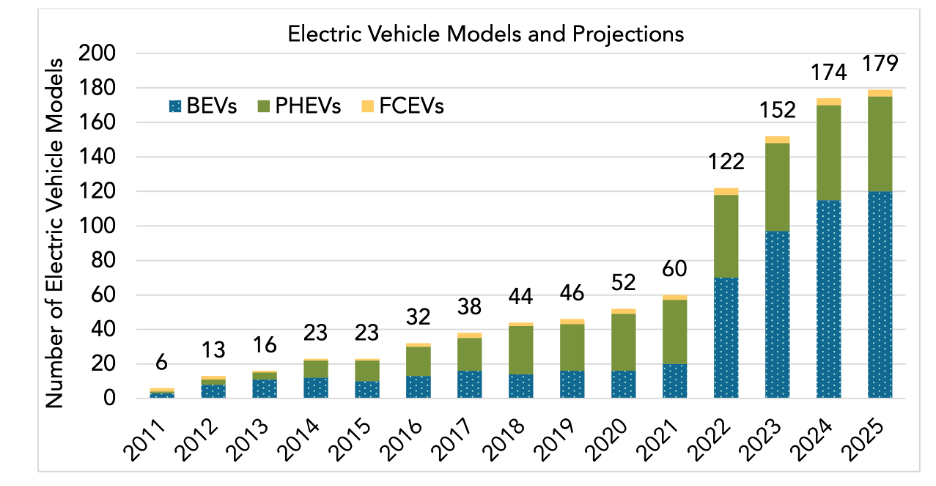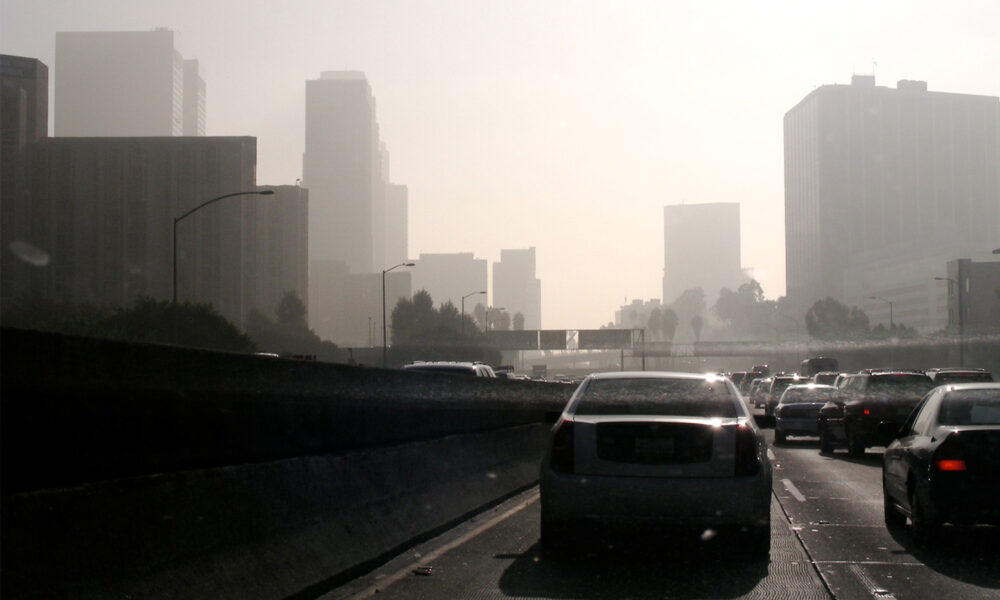California’s air pollution regulator, the Air Resources Board, is poised to adopt one of the most important steps that the state has ever taken to reduce exposure to air pollution and limit climate changing emissions. The Advanced Clean Cars II (ACCII) regulations are the newest version of clean air rules for passenger vehicles and are the culmination of over 50 years of work to address the harm from tailpipe pollution in the state.
California is already experiencing climate change with extreme drought and destructive wildfires. We also have the worst air quality in the nation, causing avoidable suffering from disease and early deaths. If we want to clean our air and slow global warming, we need to greatly reduce emissions from passenger cars and trucks. In California, these vehicles produce more than one quarter of the state’s human-caused emissions, more than agriculture and commercial and residential buildings combined.

Switching from gasoline and diesel engines to electric motors is one of the most effective ways to reduce global warming emissions and air pollution. In California, driving on electricity using the average plug-in vehicle can lower emissions to that of a hypothetical gasoline car that achieves 116 miles per gallon fuel economy. Put another way, driving the average electric car in California reduces emissions by over 70% compared to the average new gasoline car. And this benefit will only grow over time as California’s electric grid gets cleaner with more generation from renewable sources.
The impact of the new rules goes beyond just lowering carbon emissions. The Air Resources Board estimates that between 2026 and 2040, the ACCII rules will eliminate 69,569 tons of nitrogen oxides and 4,469 tons of particulate matter (PM2.5), leading to over 1,200 fewer cardiopulmonary deaths due to air pollution.
New rules will make cleaner cars available
The ACCII regulations have several key components that make sure gasoline tailpipe pollution is greatly reduced. First is stricter smog-forming pollution rules for conventional cars. But the cornerstone of the rule is the increasing requirement for zero-emission vehicle (ZEV) sales. UCS analysis shows that the ACCII regulations will mean that about half the cars on the road in 2035 will be zero-emission models, with almost 90% by 2045.
The new rules will:
- Require 35% ZEV sales of new passenger vehicles by model year 2026, increasing to 68% for 2030 vehicles and 100% by 2035. Up to 20% of ZEV sales can be plug-in hybrid models. Currently, the ZEV requirement is about 15% sales by 2025.
- Ensure that plug-in hybrid cars and trucks are more capable of operating in full-electric mode by requiring manufacturers produce plug-in hybrid vehicles with a minimum of 50 miles of electric range and the ability to operate at highway speeds under electric power only.
- Add warranty conditions on the vehicle batteries to make sure used ZEVs are available and have adequate performance. This is important as more cars sold are used than new.
- Require labeling of batteries to help reuse and recycle these components.
- Standardize battery “state-of-health” metrics that will give used car purchasers information about the condition and history of an EV’s battery pack.


California tells automakers to step on it
All of these improvements are crucial, however the centerpiece is the requirement on manufacturers to sell an increasing number of ZEV in the state, providing a roadmap to achieving the goal of all new passenger vehicles being zero emission vehicles.
In the fall of 2021, the Air Resources Board presented a draft requirement that would allow compliance with only 24% ZEV sales in 2026, and UCS criticized this as being much too weak. Past rules were adopted when fewer ZEV models were available and sales were a small fraction of new cars, but that is not where we are now. UCS advocacy highlighted that this rule comes at a time when manufacturers are selling many more ZEVs here and abroad and have accelerated plans for electric models and by investing billions of dollars into electric vehicle development. Consumer demand for EVs is also growing, with 2 electric cars (Tesla Model 3 and Model Y) the top-selling vehicles in the state for the first half of 2022.
The growing pressure on automakers to reduce emissions and move to electric vehicles is working. Recently, automakers have made significant announcements and progress on the vehicles they are bringing to market:
- Ford is now selling a fully electric F-150 pickup truck, a model that has the highest sales volume of any passenger vehicle in the US.
- General Motors has announced a goal of making all of its new passenger vehicles zero emissions by 2035.
- Volkswagen stated its expectation that 50% of US sales will be all-electric by 2030.
- Volvo has committed to manufacturing only fully electric vehicles by 2030.
- There are multiple plans for zero emission full-size SUVs and pickups including the Ram 1500, Chevrolet Silverado, and multiple Jeep models.
Altogether, the Air Resources Board estimates that by 2025, there will be 179 models of ZEVs available, or almost triple the number available last year. Because of the advocacy of UCS and others, the current rule now requires 35% zero emission vehicles in model year 2026, which is achievable given ZEVs made up almost 18% of new car sales in California during the first half of 2022

Is California moving fast enough to reduce vehicle emissions?
This regulation is an important step forward in the fight to limit the damage from climate change and to safeguard our air quality, but it alone is not enough. While the ACCII rule does call for 100% zero emission vehicles by 2035, the ZEV requirements fall short of the pace the Air Resources Board’s own analysis shows is needed to meet California’s climate goals. More will have to be done to decrease gasoline consumption, including reducing the need to drive altogether by using transit, biking, and walking.
The ACCII rule also doesn’t do enough to address inequity in air pollution exposure and access to cleaner vehicles. The Air Resources Board will need to work to ensure complementary programs, like vehicle incentives and financing assistance are more widely available to lower-income drivers and those in communities most burdened by air pollution from our transportation system. They also have an important opportunity to clean up air pollution in the most impacted communities by strengthening the Advanced Clean Fleets rule for heavy-duty trucks they’ll be hearing in September.
A great step forward towards cleaner vehicles
ACCII is a historic step forward to reduce exposure to air pollution and limit heat-trapping emissions. California first started regulating tailpipe emissions over fifty years ago and adopted the first zero emission vehicle rules for passenger cars in 1990. Now the state is on the cusp of adopting ZEV rules that will put us on the path to eliminating tailpipe pollution from the cars, trucks, and SUVs we drive over the next three decades. It also can be a roadmap for other states to follow as momentum for cleaner cars gains strength across the nation.

